Table of contents
- How Far Has the NFT Industry Progressed?
- What Are NFT Marketplaces?
- 1. Crypto.com | NFT
- 2. Binance NFT
- 3. OpenSea
- 4. NFTrade
- 5. Nifty Gateway
- 6. Solanart
- 7. CNFT.io
- 8. Mintable
- 9. Magic Eden
- 10. Foundation
- 11. Rarible
- 12. Solsea
- 13. Refinable
- 14. KnownOrigin
- 15. Your Custom-Made NFT Marketplace
- It's Time to Choose the Ideal NFT Marketplace for Your Project
- Learn More
A classic motto in marketing and sales is that “good distribution is just as vital as a good product”. In other words, a good product needs a solid distribution channel to sell.
This means that no matter how good your NFT project or roadmap is, its success is partly determined by how it's marketed and sold.
Mobilizing a team and constructing an NFT project from the ground up can be a monumental undertaking, but what most founders and creators overlook is where to sell NFT art.
Choosing the right NFT marketplace can be difficult because so many elements influence it. Some elements might be the demographics of the project’s audience, the type of blockchain that’ll be hosting it, the certain features the marketplace needs, the popularity of the platform, and how much money the creators have.
Another reason for this stumbling block is that creators are given a plethora of options, making it easier to lose sight of the best marketplace for their project.
When making a decision, we must consider the trading volume of the individual marketplace, the number of visitors, listing and commission fees, security measures, etc.
Even though this is a difficult step in any NFT project, if it’s done correctly, the project can reach the right audience.
To help creators to choose the ideal marketplace for their NFT project, this article provides an analysis of the top 15 NFT marketplaces and what they bring to the table.
How Far Has the NFT Industry Progressed?
NFTs are an excellent way to enforce ownership and security of art; something that the physical industry has been battling for millions of years.
If you want to sell an art piece, you can now make it into a token. This means that any information about the art piece will be stored on a distributed ledger, like the blockchain.
In 2020, the NFT industry generated 94.9 million USD in revenue. But in 2021, that number skyrocketed. The total sales of the NFT market reached a whopping 25 billion USD. This momentum and popularity promised to generate one of the highest amounts of wealth in history.
We witnessed people earning more in a few hours than they had in their whole lives. And, once again, we noticed a surge in traffic to NFT marketplaces, as the term ‘NFT’ rose in Google search metrics.
NFT marketplaces are the foundation of these mind-boggling figures. This demonstrates the unparalleled significance of using the proper marketplace for your project.
What Are NFT Marketplaces?
A wonderful way to get your art in front of the world is through NFT marketplaces.
You might think of these marketplaces as malls where you can rent space to sell your wares and pay a portion of your sales to the mall.
The commission fee isn't set in stone and varies widely depending on the platform.
So, it's critical to grasp what these markets are all about and choose the ideal one for your project.
An example of an NFT marketplace is OpenSea, the world's biggest NFT platform. OpenSea saw a trading volume of 5 billion USD in January 2022. It was the platform's highest-ever sales total. The previous record was set in August 2021, when 3.4 billion USD was transacted.
With that said, however, the NFT community has had a love-hate relationship with the largest NFT marketplace. For example, the OpenSea Insider trading scandal, poor response to artists’ requests for help with stolen artwork, and security flaws have all been reported in recent months on OpenSea.
When it comes to selling NFT art, some artists and investors are debating where to sell NFT art.
The rest of this article focuses on the advantages and downsides, features, supported chains, commission, listing costs, and user experience of the top 15 NFT marketplaces we have available to us.
1. Crypto.com | NFT
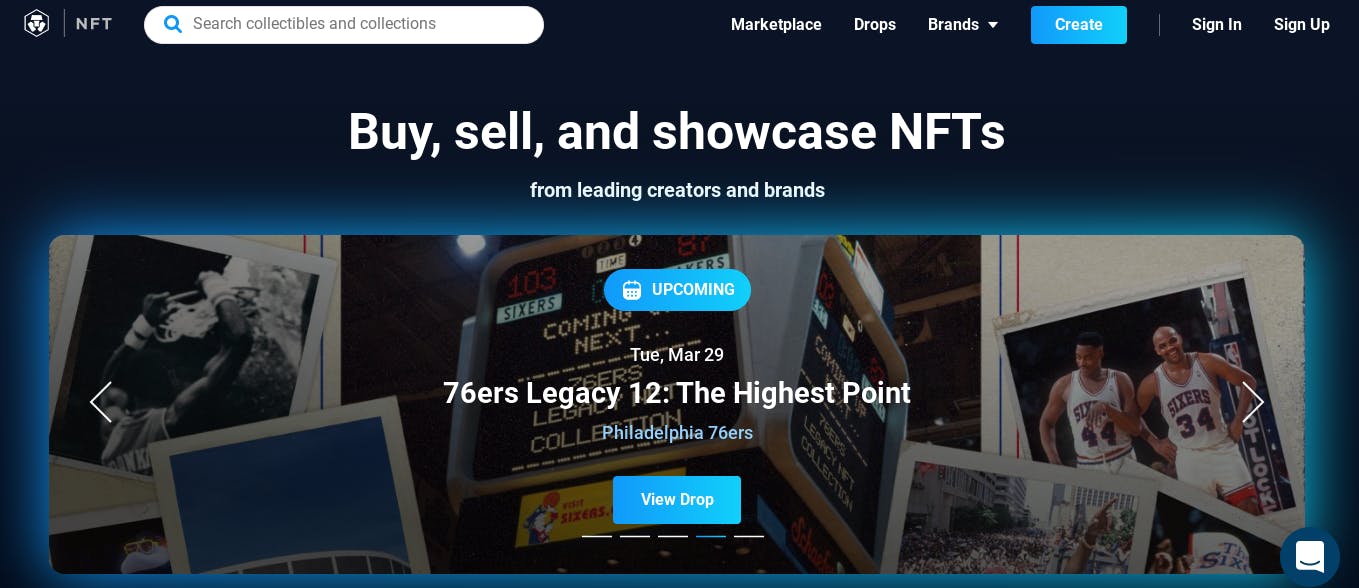
In March 2021, Crypto.com, one of the world's largest cryptocurrency exchanges, opened its own NFT marketplace. They've risen swiftly to the top of the market as one of the best marketplaces.
Supported Chains
Crypto.com/NFT supports the Crypto.org chain and Ethereum-based NFTs.
Features and User Experience
The good news is that people can make a one-click purchase using a credit or debit card. Anyone can buy, sell, and trade NFTs on the platform, regardless of whether or not they’re a user of Crypto.com.
Tokens issued on the Crypto.org Chain can now be withdrawn from Crypto.com/NFT using an on-chain withdrawal feature, which was added in July 2021.
As a result, customers can transfer their NFTs to any marketplace or wallet that supports Crypto.org Chain with ease.
Platform Fees
Crypto.com has announced that traders and creators will pay a fee of 1.99% on all sales.
This offer of 1.99% processing fees for primary and secondary sales has a time limit (it expires June 30th, 2022 at 23:59 UTC). After that, their terms and conditions will most certainly be revised.
Aston Martin F1, Snoop Dog, Ugonzo Art, and Travis Ragsdale are just a few of the site's top creators.
2. Binance NFT
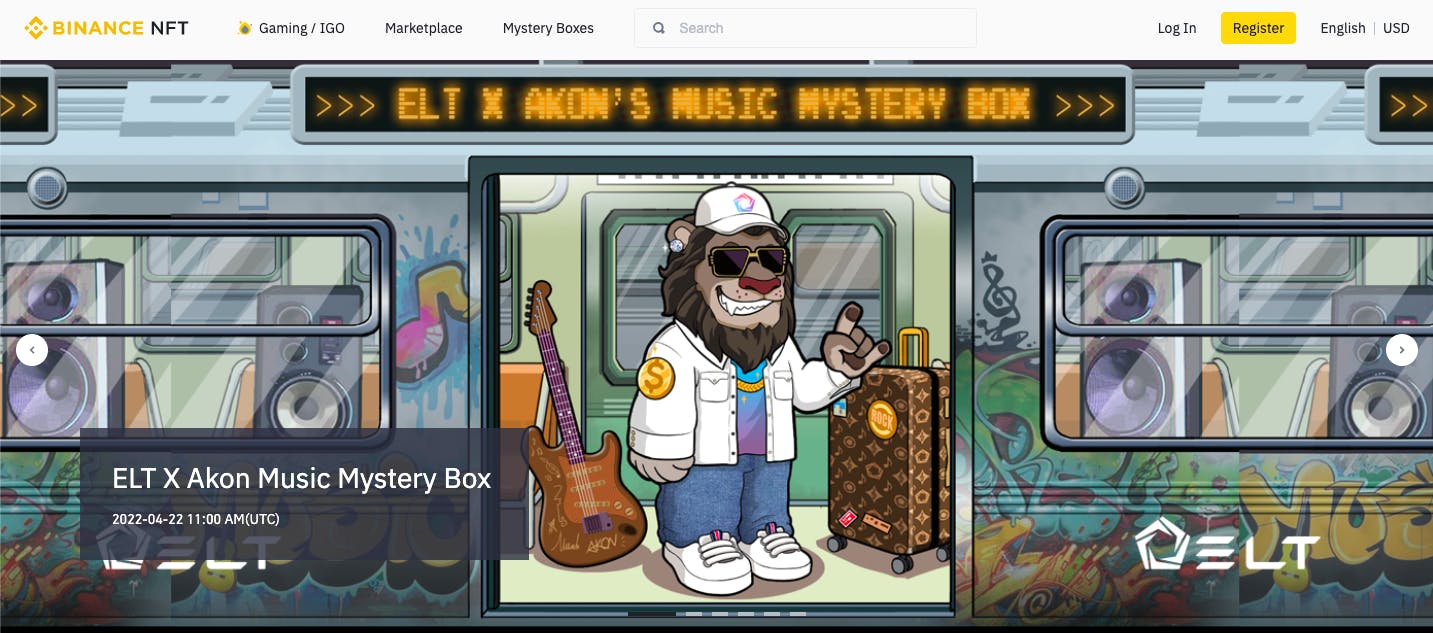
One of the world's most popular curated NFT markets, Binance NFT, was launched in June 2021. Since then, it has grown to include collectors, artists, gamers, etc. on a single platform.
Supported Chains
Trading can be done on Binance Smart Chain and Ethereum networks, both of which are supported.
Features and User Experience
The NFT ecosystem's first Mystery Box platform is Binance. The main goal of Mystery Boxes was to make NFT trading and collecting more enjoyable for the community as a whole.
Binance created a platform for NFT gaming, following their Initial Game Offering (IGO).
In addition, the platform provides a lot of educational content in the form of articles and videos to help with user adoption and comprehension.
Platform Fees
Listing is completely free of charge. However, all NFT sellers and creators on Binance NFT pay a fixed 1% trading cost.
Da Vinci and Van Gogh's masterpieces from the State Hermitage Museum, NFT fashion from Vogue Singapore, Balmain Paris, and Jimmy Choo are just a few of their most notable collaborators.
3. OpenSea

Since its inception in 2017, OpenSea has boasted of its status as the first and largest NFT marketplace in the world. For consumers, it provides a means for them to trade their goods and for artists to create new digital projects.
Supported Chains
OpenSea users can access Ethereum and Polygon blockchains using the platform's multi-chain capability.
Features and User Experience
In addition to Metamask, Coinbase, and WalletConnect, OpenSea supports a wide range of other popular wallets. It also supports over 150 payment methods.
It’s also possible to buy and sell at auctions using the cryptocurrency WETH. WETH and ETH have the same value on OpenSea and can be swapped by paying gas.
Gifting NFTs to other OpenSea users is one of the coolest features on the platform.
On OpenSea, there are a lot of articles about NFTs that are meant to help people learn more about them.
Platform Fees
For each sale you make on the platform, OpenSea charges a 2.5% commission fee.
BAYC, Cryptopunks, Azuki, and Doodles are just a few of the top Open Sea creators.
4. NFTrade
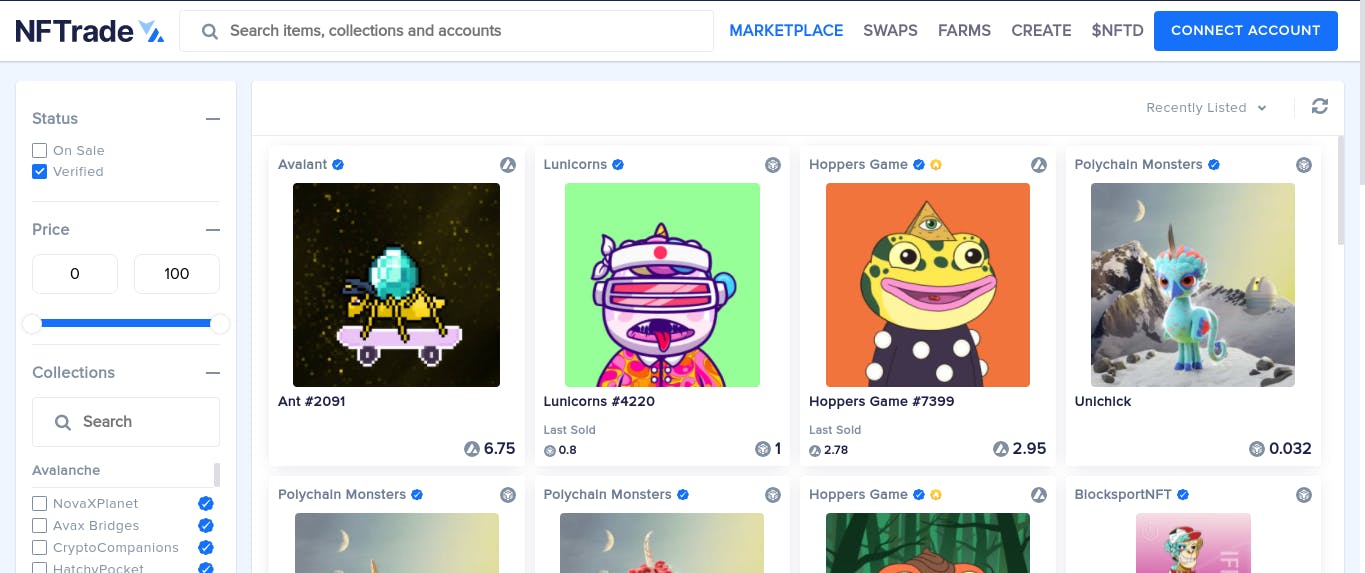
NFTrade is a good choice because it aims to make it easier for creators to build NFT collections.
If you can drag and drop, you can use NFTrade, according to its mantra.
Supported Chains
NFTrade supports several smart contract networks, including Ethereum, Binance Smart Chain, Polygon, and Avalanche, as well as others that are in development.
Features and User Experience
With NFTrade, navigating the NFT market is a breeze.
Its easy-to-use environment allows anyone to use this platform to create, acquire, and sell NFTs across multiple blockchain networks. They also offer reduced transaction fees when using their chains.
Platform Fees
There are currently no transaction fees on NFTrade, as of April 2022.
Yield Hunt, The Underground, and Hoopers Game are a few of its top creators.
5. Nifty Gateway

In 2019, Gemini, led by the Winklevoss twins, bought Nifty Gateway.
An intriguing tale unfolds around this particular marketplace. In the beginning, it was founded by identical twins and then purchased by another set of identical twins.
The Nifty Gateway market uses the Ethereum blockchain to store its NFT tokens. However, Nifty Gateway isn't your standard marketplace.
A collaboration between Nifty Gateway and well-known artists and brands result in limited-edition collections that can only be found on the site, not anywhere else.
Features and User Experience
It’s a custodial NFT trading platform. Gemini's technology protects their artistic endeavors. As a result, the cost of acquiring and reselling art is incredibly low.
There are debit cards, credit cards, and ETH available for payment.
Before your work can be featured in Nifty Gateway, you must apply.
Platform fees
5% of the sale price is charged in fees and taxes, plus 0.30 USD for transaction fees. The original artist receives 10% of the proceeds from secondary sales.
6. Solanart
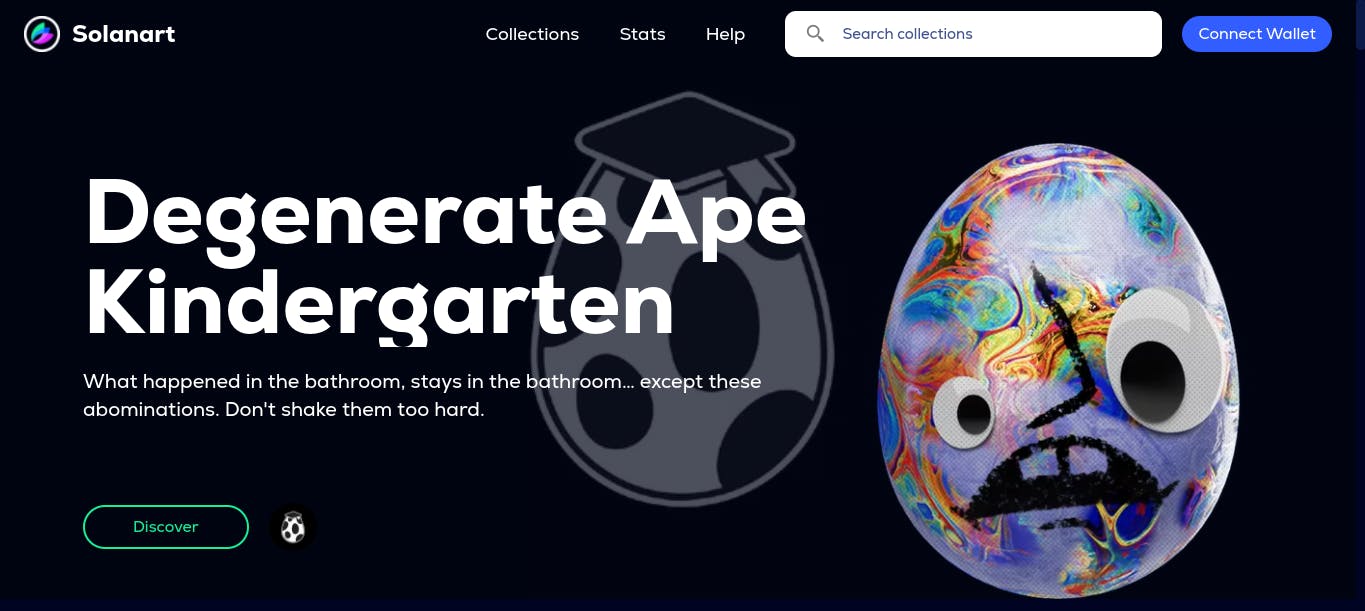
On the Solana blockchain, Solanart is the first and largest fully-fledged NFT marketplace that focuses on fast and easy NFT trading.
Features and User Experience
Several Solana-based wallets are supported by Solanart, but it’s most often used in conjunction with the Phantom Wallet.
Unlike Nifty Gateway, Solanart is an open marketplace like OpenSea, where anyone can post their art.
Their NFT art website is simple to use, and there are many renowned Solana-based NFTs housed at Solanart.
You can start making transactions on Solanart as soon as you have SOL in your Phantom Wallet.
Platform Fees
Your NFT sales are subject to a 3% commission fee from Solanart.
Degen Ape, SolPunks, and Aurory are just some of the most well-known projects running on the platform.
7. CNFT.io

The first marketplace on the Cardano blockchain, CNFT.io, was launched in June 2021.
Features and User Experience
Cardano is an excellent blockchain, but it has a long way to go before it can compete in the NFT space. CNFT.io hopes to remedy this situation.
As of this writing, Nami, ccVault, Flint, and Gero Wallet are the only wallets supported by the platform.
Platform Fees
Each successful NFT sale earns CNFT.io a 2.5% commission.
8. Mintable
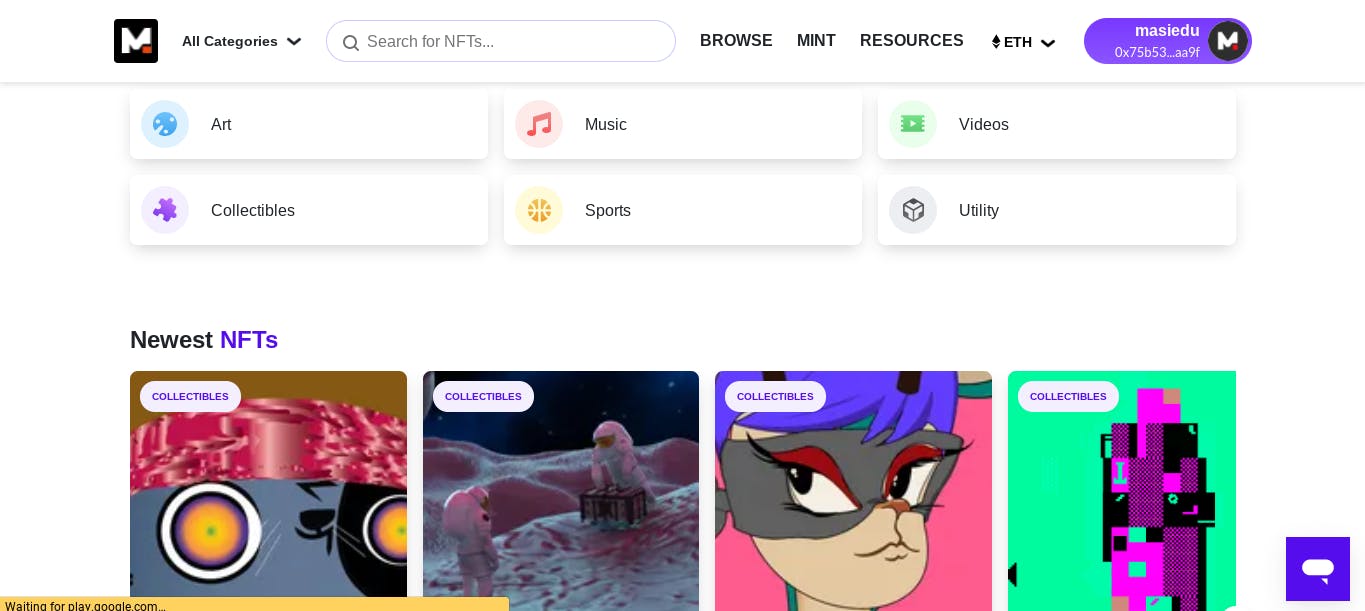
Using Ethereum, Mintable holds all of its artwork.
Mintable makes it easy to turn your information (documents, art, music, PDFs, photos, etc.) into a blockchain-based asset.
Features and User Experience
The Ethereum-based wallet, Metamask, is supported by Mintable. However, the platform promises a gas-less method of minting NFTs for free.
Platform Fees
When it comes to fees, Mintable has something unique to offer. They charge 2.5% the sale price for each NFT traded. A 5% fee is applied to gas-less articles, while a 10% fee is applied to print-ready items.
9. Magic Eden
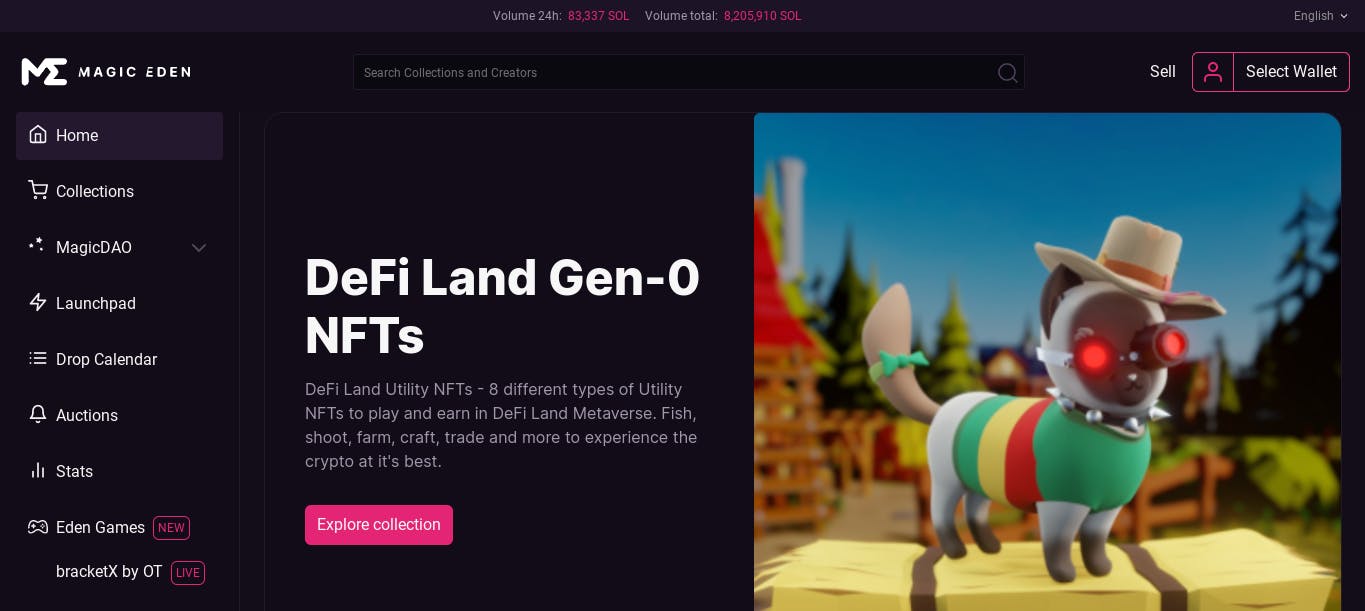
Solana's Magic Eden is a major NFT marketplace. When they were in the beginning phases, they saw incredible progress.
Trading volume on Magic Eden reached 200 million USD in the first two months after the platform's debut.
Features and User Experience
Solana wallets such as Phantom, Solflare, Sollet, and Torus are all compatible with the platform.
The Launchpad at Magic Eden is an exclusive minting feature. Only 3% of all Launchpad submissions are accepted, and only the best projects are showcased.
Hosting your NFT games is a breeze thanks to the platform's robust features.
Platform Fees
They charge a 2% fee on all transactions and adhere to the terms specified by the creators of the products they sell.
10. Foundation
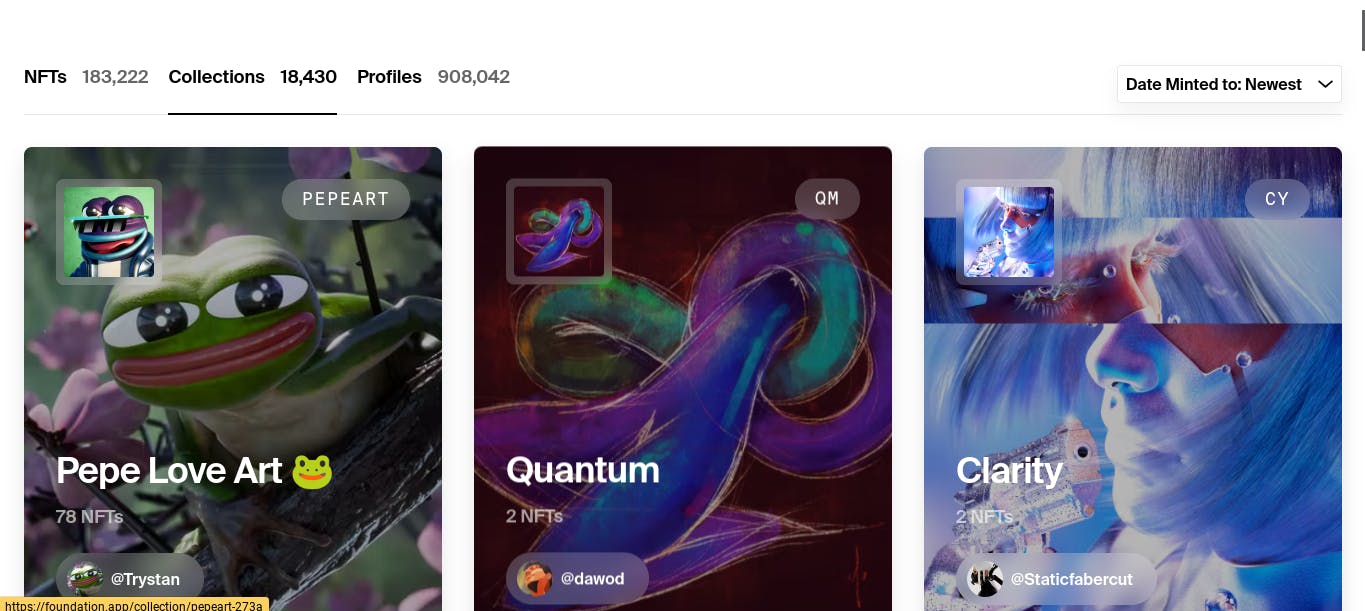
When Foundation was founded in February 2021, Ethereum has seen millions of dollars worth of transactions from the platform.
Anyone can start an NFT collection by creating a profile on Foundation. Only a wallet and some ether are required.
Features and User Experience
Foundation has a simple user interface, and is compatible with WalletConnect and Metamask. This platform has several advantages, such as its ease of use and smart contract compatibility.
Platform Fees
For makers and collectors in both the primary and secondary markets, Foundation charges a service fee ranging from 10–15%.
11. Rarible
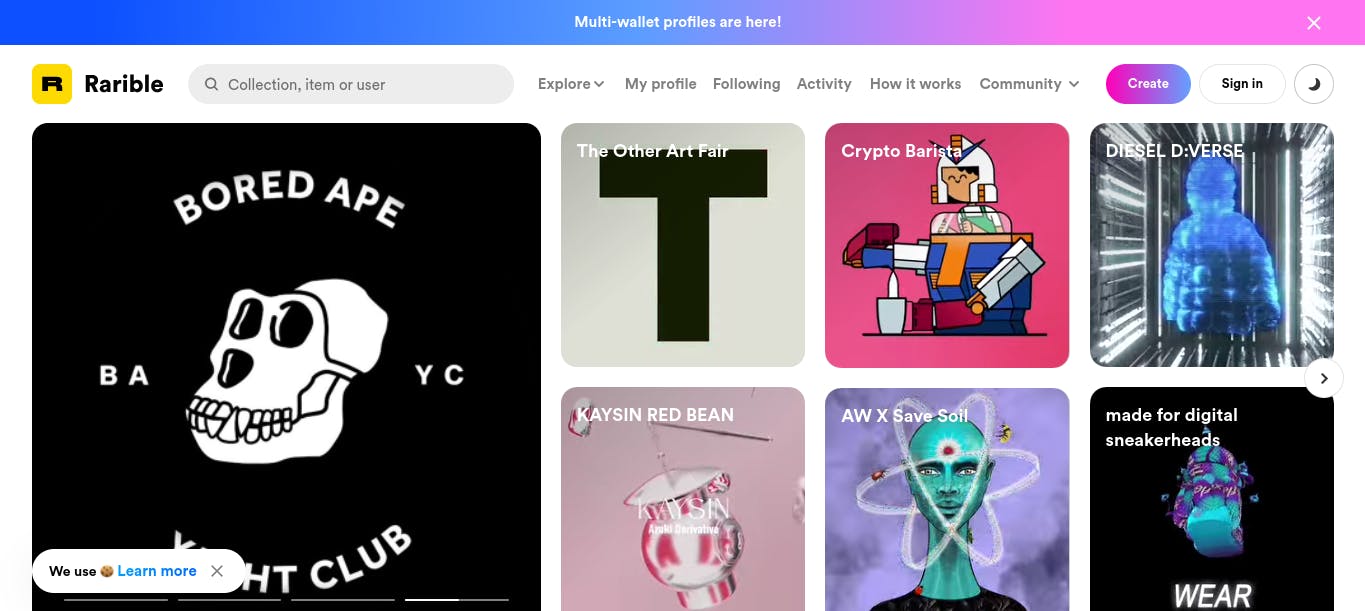
In 2019, the Rarible NFT marketplace was launched.
Rarible is unquestionably one of the biggest platforms in the market right now.
On Rarible, it's easier to make a living as an artist. Thousands of people utilize it as a real-world marketplace. NFTs can be created and sold in the marketplace by users without fear of being harmed.
Supported Chains
Rarible supports Ethereum, Flow, Tezos, and Polygon.
Features and User Experience
In Rarible, a wide range of wallets are supported, making it easy for anyone to join and trade NFTs on the platform.
NFT Royalties is another cool feature Rarible has. For example, if the previous owner placed a 7% royalty on the artwork, they would receive 7% of every purchase transaction including the artwork.
Platform Fees
Rarible charges a fee of 2.5% for each transaction.
12. Solsea

On Solana, the NFT marketplace, Solsea, is highly recommended.
In this marketplace, NFT creators can choose and add licenses to their NFTs.
Features and User Experience
All other Solana-based blockchains, including Solflare, Phantom, Slope, and Coin98 are supported by Solsea.
Metaplex-compatible NFTs can be created directly in the marketplace by creators, who can then add their properties to each NFT.
Creators can now list and sell their work in a broad variety of currencies.
Platform Fees
Every successful NFT sale is subject to a 3% marketplace fee. In addition, artists are free to set their royalties.
13. Refinable
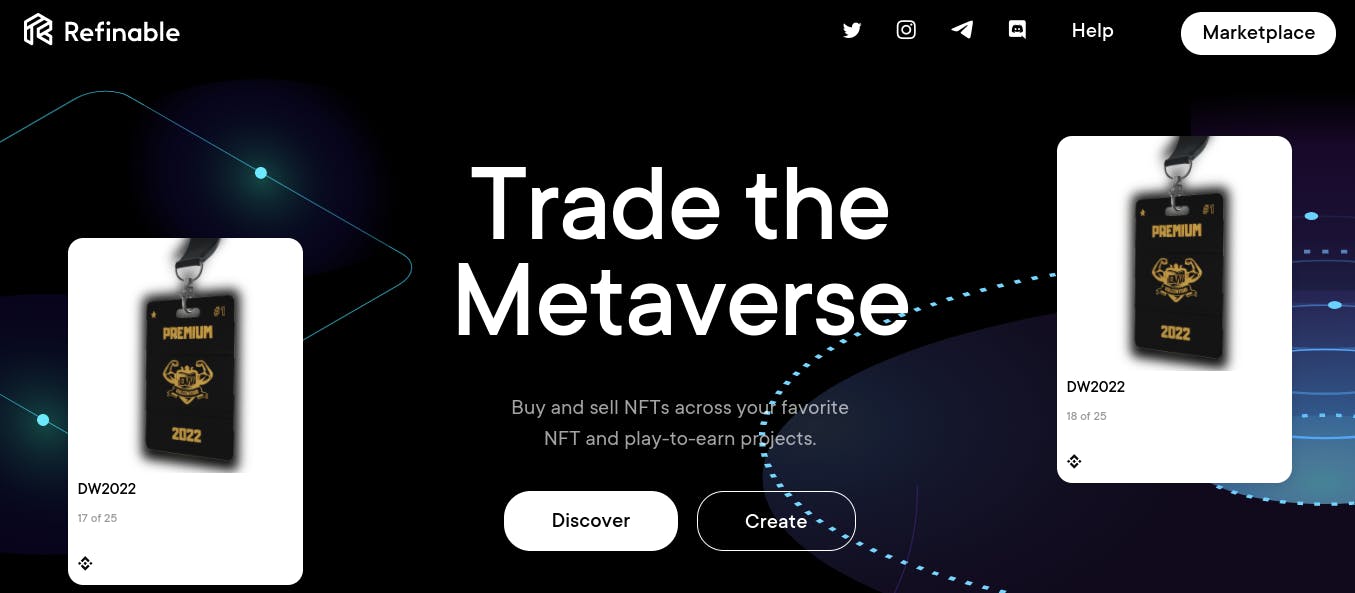
Refinable shoots for the metaverse!
The motto of their decentralized network is Trade The Metaverse.
Refinable is a multi-chain decentralized NFT marketplace, where users can trade products from all across the metaverse.
Supported Chains
Refinable supports Ethereum, Binance Smart Chain, and Polygon.
Features and User Experience
Connect your wallet to Refinable to find native support for all of your Ethereum, Polygon, Solana, and Binance Smart Chain NFTs. This way, you can keep all of your NFTs in one place.
It also offers a wide range of wallets for the three blockchains that they support.
Furthermore, creators can use a feature that allows them to link to their web domain to develop a stronger brand.
Platform Fees
On Refinable, there are no fixed platform fees. There's no obligation to pay. Platform fees can be customized to fit your needs.
14. KnownOrigin
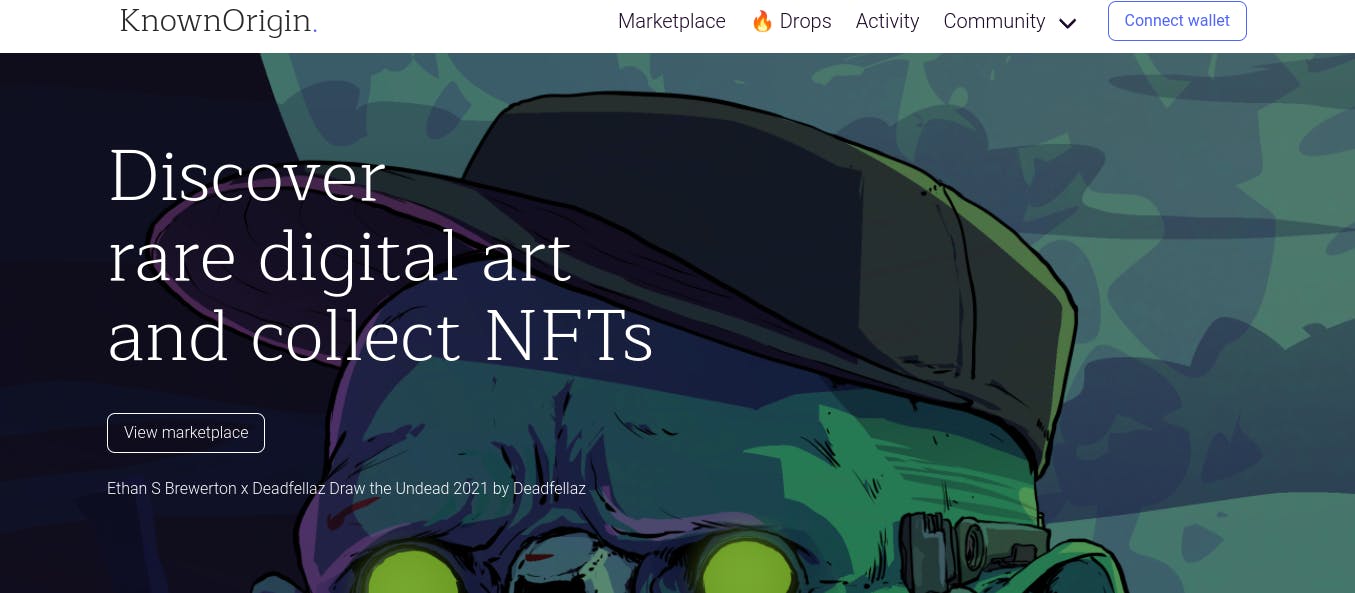
KnownOrigin, an Ethereum-based marketplace, also takes pride in being artist-driven and in fostering an environment where digital creators can easily thrive.
Features and User Experience
First, you need to connect your wallet to KnownOrigin and create an account. As with Nifty Gateway, if you want your project to be considered for inclusion on the site, you first need to fill out a form.
All of the well-known wallets like Metamask and Portis are fully supported, as are Formatic and Wallet Connect, too.
Platform Fees
Artists receive 85% of primary sales revenue, with the platform keeping the remaining 15%.
Sellers on KnownOrigin get 85% of the proceeds from secondary sales, while the artist gets 12.5%.
15. Your Custom-Made NFT Marketplace
With a little bit of coding, you can construct your own NFT marketplace. We have a resources to help you do that. Including this web3 tutorial.
If your customers visit your website, connect their wallets, and execute transactions, they’ll be able to purchase art directly from the smart contract underlying your project.
Benefits include not having to pay fees to third-party markets for hosting your art, and only having to deal with the cost of the art itself and transaction fees for your customers.
There are certain drawbacks to this, such as the time it takes to write and build your custom marketplace and the risk of exposing projects to vulnerabilities that stem from code.
Review of the Leading NFT Marketplaces and Their Evaluations
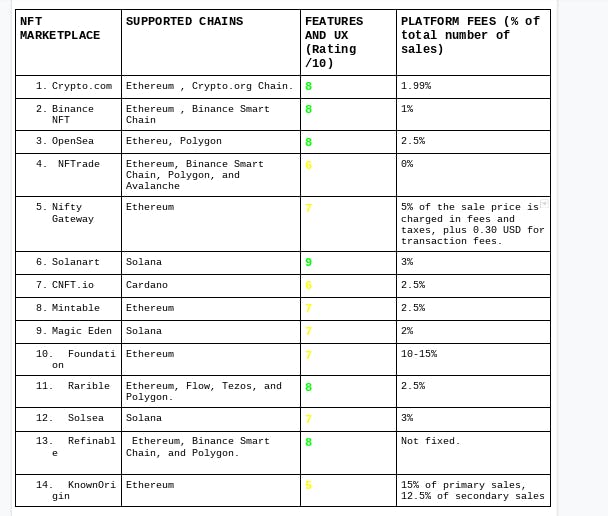
It's Time to Choose the Ideal NFT Marketplace for Your Project
Choosing a marketplace can be time consuming and a difficult choice when creating an NFT project.
However, if you have a good understanding of the project, it's simpler.
The most crucial component is the blockchain you choose. Chains should be chosen according to the marketplace's support for them.
Second, think about the downsides, benefits, and potential issues that could arise in the market.
You should learn more about the site's security, user response rate, and other useful features.
You should also consider the amount of money you have available and how much you can invest in the project. As a result, you should pay attention to the project's fee structure. A platform is going to get a certain percentage of your primary and secondary sales.
Finally, take into account the volume of trade and the number of visitors on the platform. The bigger this number, the more exposure your project will get.
Knowing your project and your target audience are the two most important things you need to know to make an informed choice.
Learn More
This article is a part of the Hashnode Web3 blog, where a team of curated writers are bringing out new resources to help you discover the universe of web3. Check us out for more on NFTs, DAOs, blockchains, and the decentralized future.

